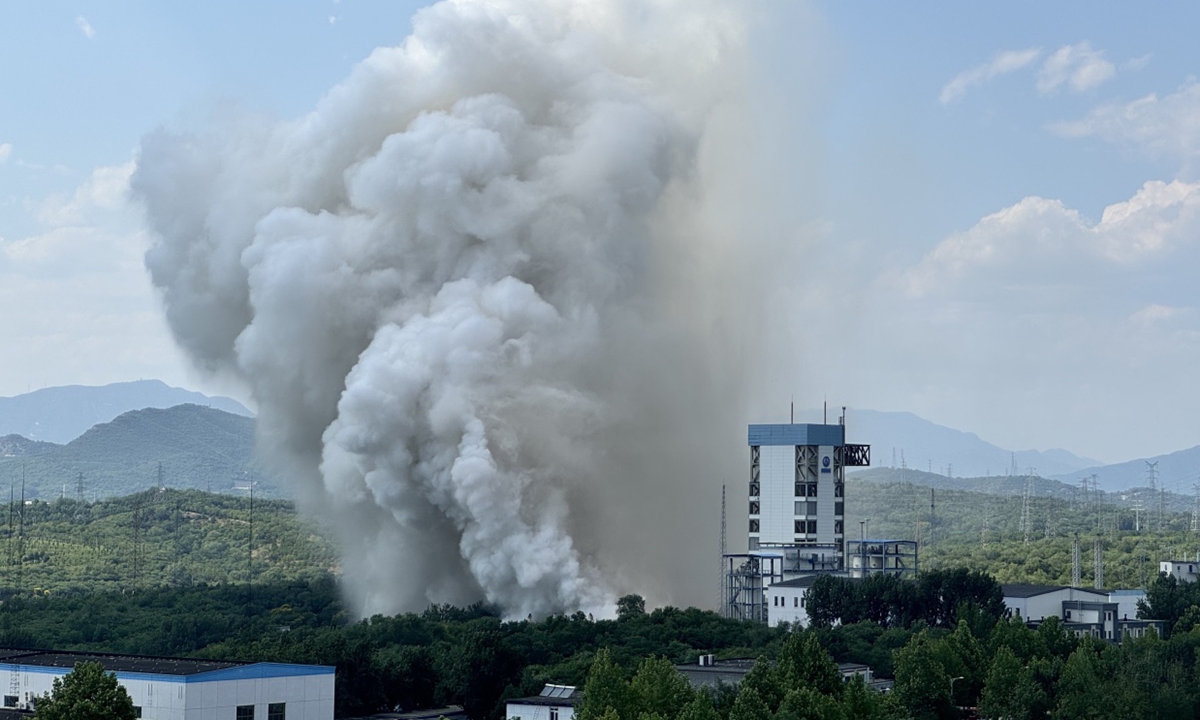
CCTV screenshot
China's new moon rocket Long March 10 on Friday made a successful test on its sub-level propulsion system, marking the first large-scale ground test at a system wide level.
During the test, the engine started as expected, operated stably, and shut down on time, with all parameters testing normal. The compatibility between the sub-level boost delivery system and the engine, the propellant refueling process, the multi-engine parallel transmission of force, and environmental characteristics have been fully verified through technical testing, the Global Times learned from the China Aerospace Science and Technology Corporation (CASC).
The Long March 10 series carrier rocket is designed for sending spacecraft and moon landers for China's manned moon landing mission. It has a total length of about 92.5 meters, a takeoff weight of about 2,189 tons, a takeoff thrust of about 2,678 tons, and a carrying capacity of no less than 27 tons for the Earth-moon transfer orbit, according to Xinhua.
A non-booster configuration of the new rocket is capable of conducting missions which include transporting taikonauts and cargo to the space station. Its total length is about 67 meters, the takeoff weight is about 740 tons, the takeoff thrust is about 892 tons, and the low-Earth orbit carrying capacity is no less than 14 tons.
The propulsion system test is the most complex and difficult ground development test in the development of carrier rockets, involving highest number of systems and the most complex states.
The Long March 10 series carrier rocket power system test involves the simultaneous ignition of three YF-100K engines, making it the largest propulsion system test in the current stage of carrier rocket development in China. The ground thrust reaches 382 tons, 1.6 times larger than the previous record.
This test also marks the Long March 10 series carrier rocket entering the fast lane for large-scale ground test development.
A second test on the sub-level propulsion system will be carried out in near future, per the development plan, to verify other work situations so as to lay a solid foundation for manned moon landing project.
The Long March 10 carrier rocket serves as strategic pillar for China's aim to land taikonauts on the moon before 2030. Preparations for the maiden flight are expected to start in 2027.
Apart from the progress with the high-thrust engine and the Long March 10 carrier rocket, China is also actively developing spacecraft and lunar landers for the manned moon landing mission.




